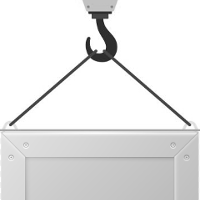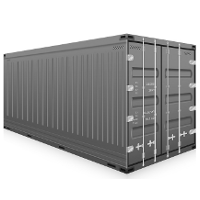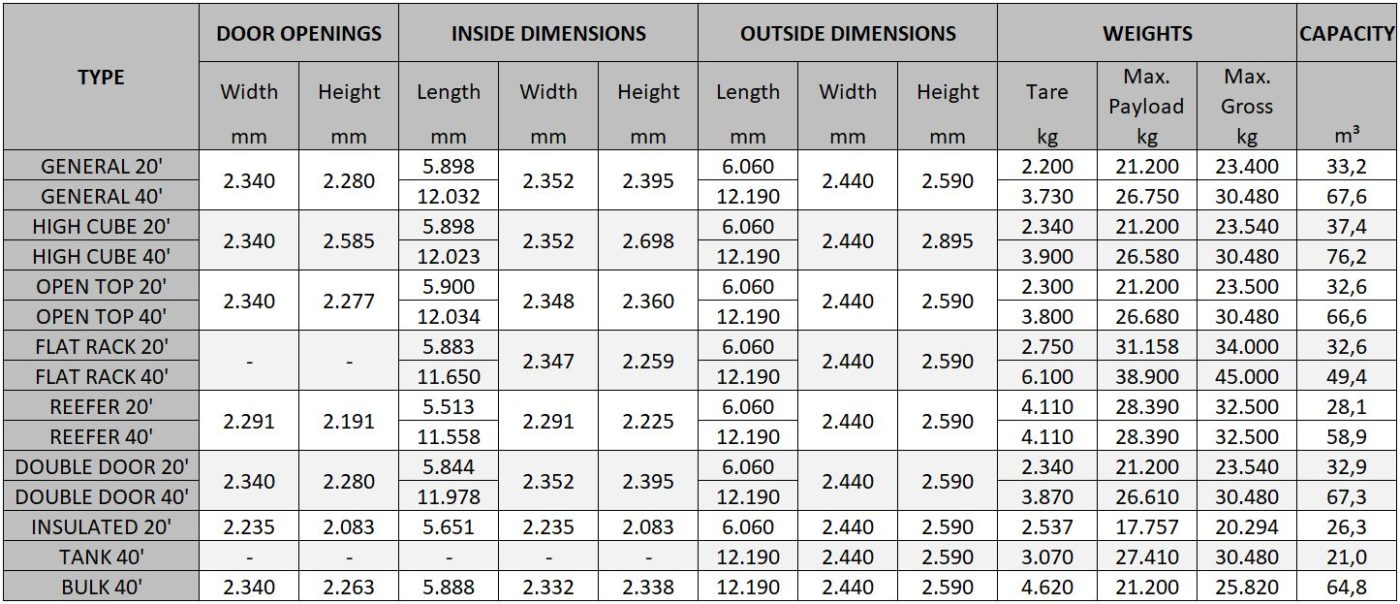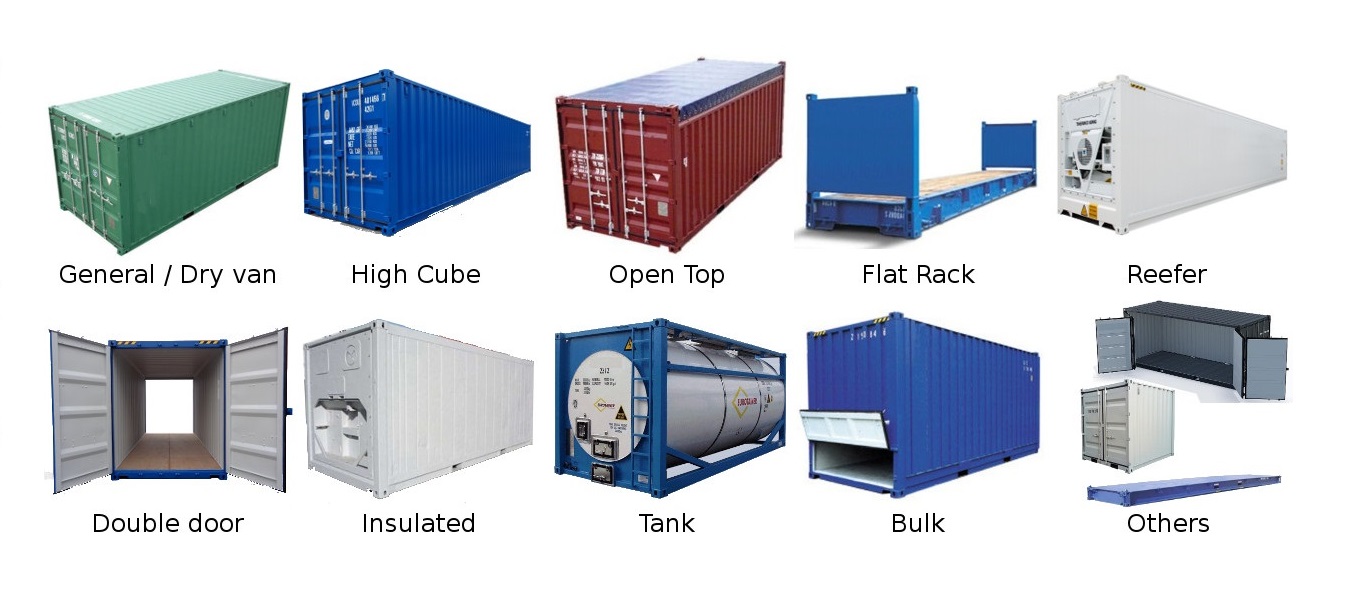Slings for machinery lifting
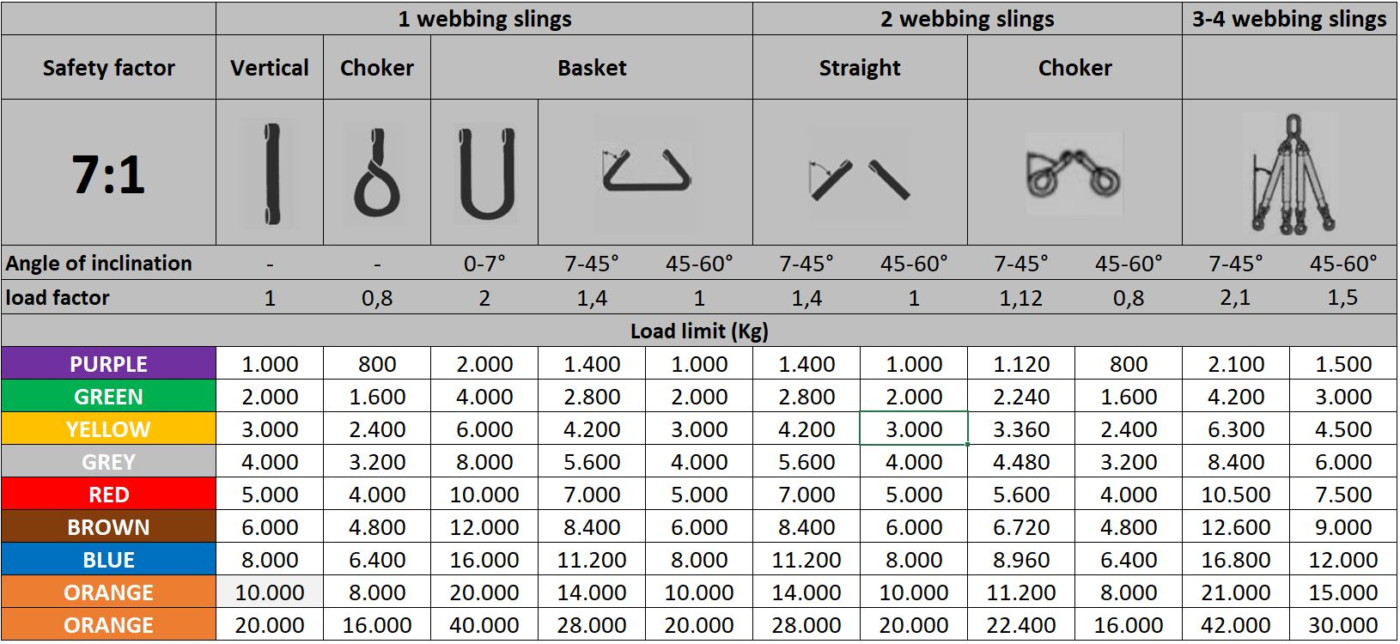
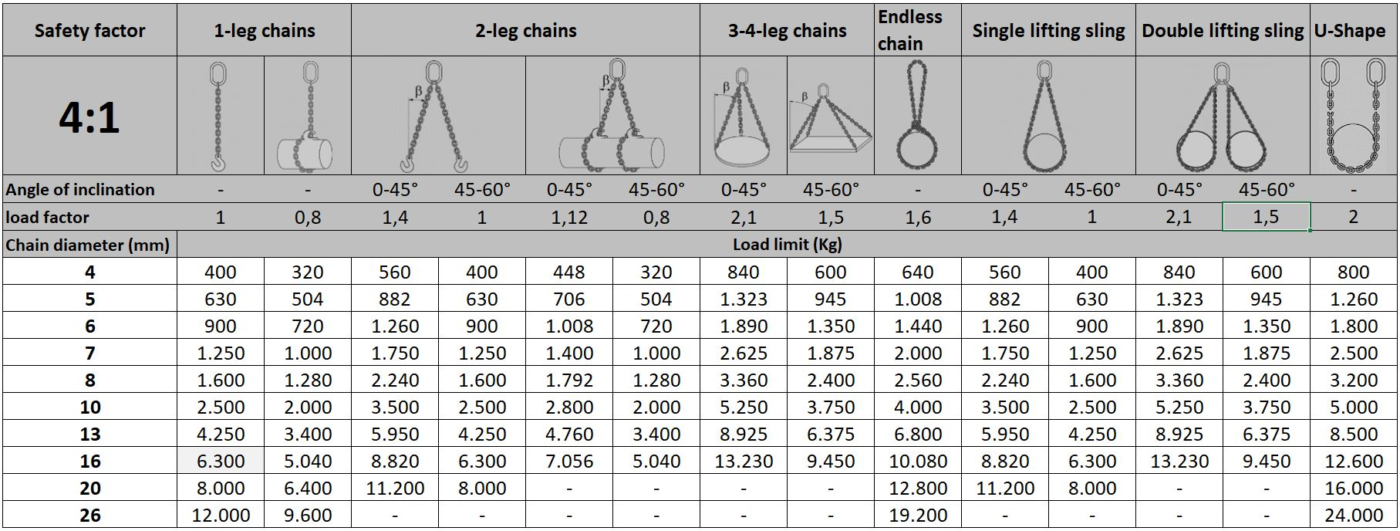
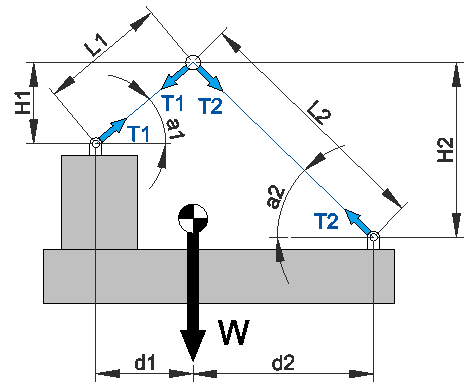
The minimal Safety factor must be at least equal to:
7:1 for webbing and round slings
4:1 for accessories made of steel
5:1 for the remaining components
Recommendations of use:
- Never slide slings under a load. Never leave a load laying on a sling.
- Never knot slings or never use twisted slings.
- Protect from any sharp edges.
- Never use knotted, cut or damaged slings without tags.
- Check the weight of the load. Never overload.
- Use slings in arrange of temperature -40°C to +100°C.
- Reference to the standards: EN 1492-1, EN 1492-2, DIN 61360, CEN Norm.
Eye opening angle
The minimum length for the eyes is fixed by standard EN 1492-1 to 3 times the width of the sling for widths up to 150mm; 2,5 times for width above 150mm. These lengths have been fixed to respect an angle usage between 10° to 20° when using the slings. An excessive eye opening angle will open the sling and a small eye opening angle will generate a bending stress at the lifting axis.


